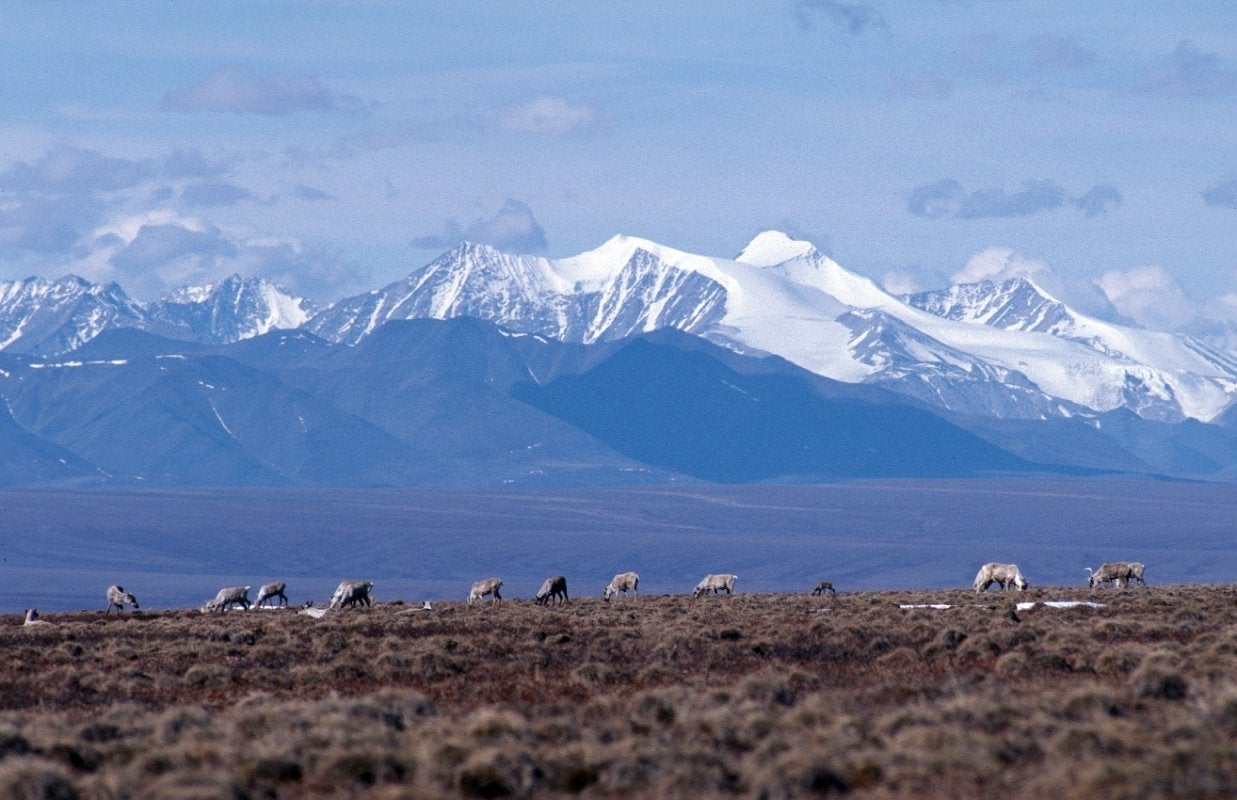The Senate is expected to vote on the tax reform package shortly after the Thanksgiving break. If gifting to the wealthy and weren’t controversial enough, the plan also includes opening the Arctic National Wildlife Refuge to the oil industry. Drilling in ANWR comes up nearly every year in Congress, but this time Republicans need only a simple majority—51 votes—because they’re pushing the tax package through a process called budget reconciliation. It’s the greatest chance in decades Republicans have to auction away, then dig, trench, and drill land that has been called the last great American wilderness.
Slipping ANWR into tax reform is a carrot for Alaskan Senator Lisa Murkowski, who’s proven a bit of a wildcard Republican in the Trump era. Murkowski has wanted to open to drilling since she came to the Senate in 2002. (So did , who held the seat for 20 years.) And the tax reform package comes with an oddly specific request for the Energy and Natural Resources Committee, which Murkowski chairs, to find $1 billion in additional revenue. That happens to be the precise amount Murkowski says drilling in ANWR would fetch the government over ten years. “Revenues,” Murkowski at a committee meeting, “are not the only benefit that will result from careful development…we will also create thousands of good jobs that support families and help put kids through college.”
For some people, it would never make economic sense to drill in ANWR. “If there is oil, it’ll be gone in a generation,” says Adam Kolton, executive director of the Alaska Wilderness League. “But the damage would last for thousands of years.” These kind of ideological debates, especially about the environment, often fall back on emotion. But the strongest argument against drilling might be the numbers, because while Republicans have always wanted to drill in the refuge, doing so today makes about as little economic sense as it has in ANWR’s 57-year history.
ANWR was created in 1960, and, at 19 million acres, is the largest refuge in the nation. There are no roads, and it’s home to polar and grizzly bears, wolverine, wolves, seals, migratory birds from six continents, muskox, and caribou herds that make the longest land migration on earth. It’s an almost prehistoric place. But because it’s so inaccessible, it’s also easy to forget.
“ANWR is a pristine place, and if they found oil in the Grand Canyon, I don’t think I’d drill in the Grand Canyon.”
Steve Barker, founder of Eagle Creek Travel Gear and board member of the Alaska Wilderness League, has spent recent years taking outdoor industry CEOs on trips to ANWR, hoping to impress upon them the importance of protecting the refuge. We spoke after he had returned from a monthlong trip in Mongolia, and Barker says that as much as he’s traveled around the world, ANWR is unlike any other place. Once, he says, he and a group watched a wolf pack wander nearby, and the animals just stared at everyone, sniffing the air, completely unconcerned. “They’d probably never seen a human before, and they wanted to sniff out who the hell we were.”
“We, as man,” Barker says, “have preserved this place for more than a hundred years, and if we destroy it now, in 40 or 50 years, a time when we probably won’t need oil all that much, what a travesty it would be.”
That any drilling can happen in ANWR is possible because of former president Jimmy Carter. In 1980, he signed the Alaska National Interest Lands Conservation Act, and while it greatly expanded ANWR’s territory, as a compromise it allowed extraction on , called the “1002 area.” Ever since, many Republicans in Congress have attempted to open this section of ANWR to drilling. They’ve tried . But the hurdle has always been finding 60 votes, because a group of moderate Republicans have consistently voted it down.
“People have said to me, ‘I’m going to bring you new information about ANWR, how environmentally we can make it safe,” Arizona Senator John McCain told in 2008. “I’ll be glad to accept new information…but I also believe that the ANWR is a pristine place, and if they found oil in the Grand Canyon, I don’t think I’d drill in the Grand Canyon.’’ (The Trump administration is, in fact, considering Grand Canyon.)
Besides being a politically opportune time to sneak drilling into a tax package, Alaska has recently learned the consequence of that old “too many eggs in one basket” adage. After oil prices plummeted this decade from $100 a barrel to , the state budget flopped from a surplus to a deficit. As a remedy, some politicians pushed to create an income tax. (Alaskans pay neither sales nor income tax, and the government sends residents a check each year from the state’s permanent fund, which is also supported largely through oil revenue.) The state Senate rejected the income tax, so instead of balancing its budget, Alaska has been looking toward ANWR, a massive pot of gold beneath the permafrost.
“If you’re in debt,” says Kolton, “imagine going to Vegas and taking your last bit of money and betting it all on red. This is a hope for an oil bonanza.”
And “hope” is the operative word. Except oil executives, no one knows for certain how much or little oil waits beneath ANWR. It is one of the tightest . But outside the oil industry, the most-informed person on ANWR’s oil is probably David Houseknecht, a senior researcher with the U.S. Geological Survey. Houseknecht worked on the last seismic survey in the area, done more than 30 years ago. He says that data puts ANWR’s oil between . If true, it would become the largest producing field in North America. Then again, that could be wrong. “In past years,” Houseknecht says, “what we saw was that some of the major multinational companies departed Alaska and are no longer exploring it.”
ANWR would fetch much, much less than the $1 billion Murkowski needs.
Drilling in the Arctic is tough. There are the two months of consecutive darkness. There’s freezing weather. And when it’s too warm, some of the ground has the stability of a soggy pillow—a condition that has grown worse with climate change. “The irony,” Houseknecht says, “is that as we reach higher global temperatures, the ice pack on shore has retreated, so now there’s actually a longer offshore drilling season.”
With all the political chaos overseas, Houseknecht says major oil companies are again considering the Arctic. But they’d still need to weigh how expensive it is to drill there. A report by the Center for American Progress (CAP), a liberal think tank based in Washington, D.C., says that to break even in ANWR, oil companies need to make $78 a barrel. That’s well above the current rate of a barrel. There’s also the added cost of litigation, because environmentalists would undoubtedly sue. And it’s not like the United States is desperate for oil at the moment. The country is in a glut. From , the United States nearly doubled its crude reserves because of offshore drilling allowed under the Obama administration.
The CAP study also found there’s plenty of land in Alaska—41 million federal acres, land roughly the size of Florida—available to drill, and that 98 percent of this is sitting idle. There are also analyses how much nearby Arctic leases have gone for, and they say ANWR would fetch much, much less than the $1 billion Murkowski needs.
“The Arctic refuge is not needed from an energy production standpoint,” says Matt Lee-Ashley, a senior fellow at CAP who wrote the analysis. “This is really more about Alaska putting a hide on the wall, so to speak.”
If opened, it would still be years before any of ANWR’s oil saw a pipeline. By then, all this arithmetic will probably have changed, and it may or may not prove to be profitable for oil companies. There are a lot of ifs when it comes to the refuge. But what’s for certain is that if companies are allowed to drill on the coastal plain, ANWR will no longer be America’s last unspoiled wilderness.


